When you learn how to quickly scan nutrition labels for essential information, you will be able to shop faster, eat better, and if that is your goal, then losing weight will be easier.
The Nutrition Facts label, first introduced in 1993, has changed over time. In 2016, the U.S. Food and Drug Administration (FDA) updated food labeling guidelines, with changes that took effect on January 1, 2020, for larger food manufacturers and on January 1, 2021, for smaller food manufacturers.
The new design features larger text for “Calories,” “Serving Size,” and “Servings Per Container.” These changes will help you find the most important information for weight loss and healthy eating.
The images throughout this guide show some examples of the older version of the Nutrition Facts label on the left and the newer version on the right, so no matter which version you find on packaging, you will know how to read nutrition labels accurately.
Serving Size
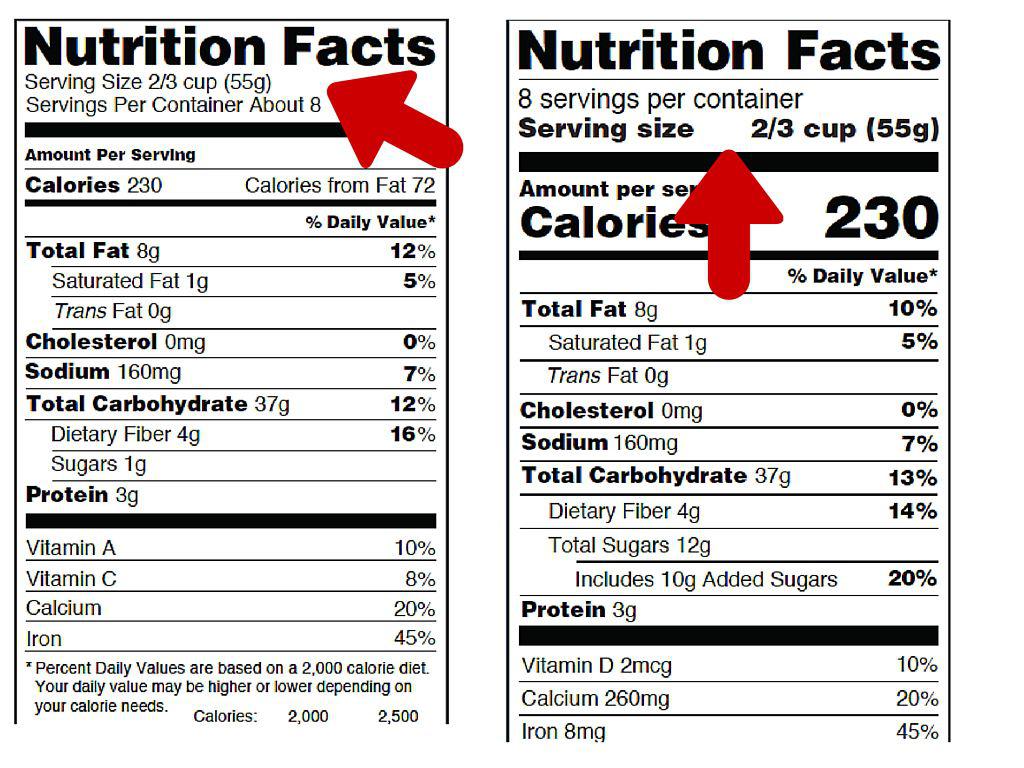
Portion control and calorie counting are essential for managing your weight. Therefore, it is important to check the serving size on the nutrition label to help you eat the right portion and accurately count the calories you consume each day.
.
- .Use the "Serving Size" chart to manage portions. The serving size on the packaging is not necessarily the amount of food you should eat but rather the amount that an average person consumes in one sitting. You should not use this number to decide how much food to eat, but rather to determine how many calories are in a typical serving of that food.
- .Use "Serving Size" to calculate calories accurately. If you use a calorie tracking app, you will enter the types of food and the amount of food into your daily food log to calculate calories and manage your diet. Most of these services use the "Serving Size" chart as the default amount. Be sure to adjust your portion sizes if they differ from the serving size listed in the chart.
.Calories
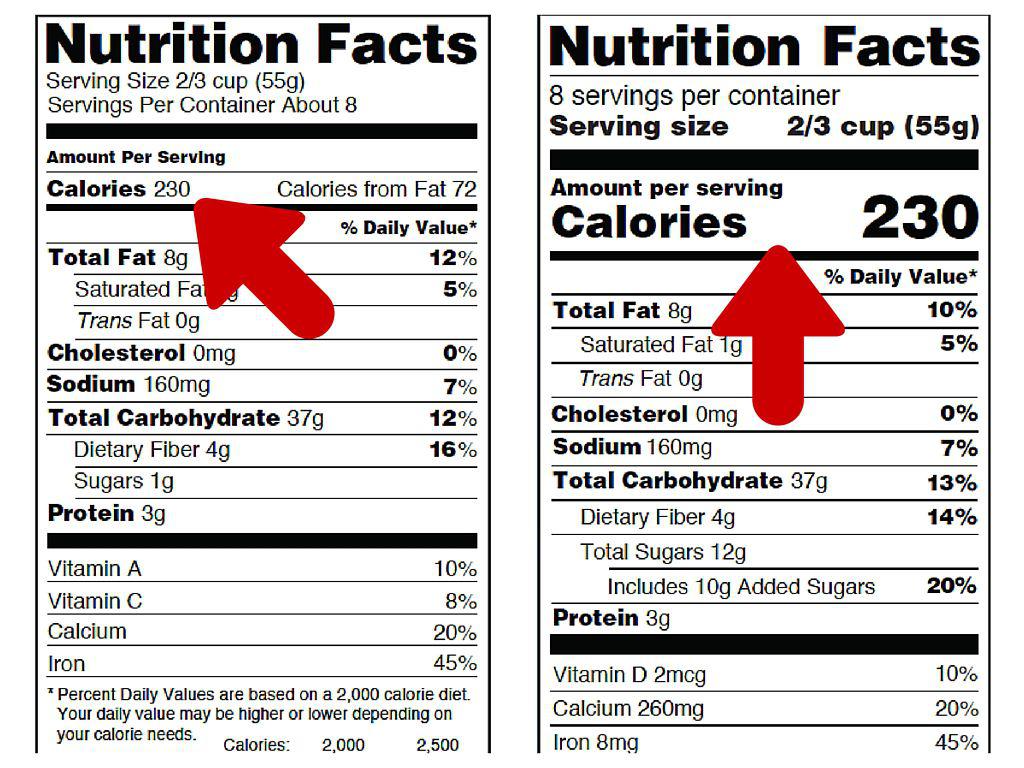
No matter what eating plan you follow, calorie intake is very important. Of course, eating quality calories (more nutrient-dense foods) will help you manage your weight more easily. However, it is important that you eat the right amount of calories each day.
The calorie amount on the nutrition facts label indicates how many calories are in a typical serving. At the grocery store, it can be helpful to compare different brands and products to make the best choice for you.
Fats and Cholesterol.
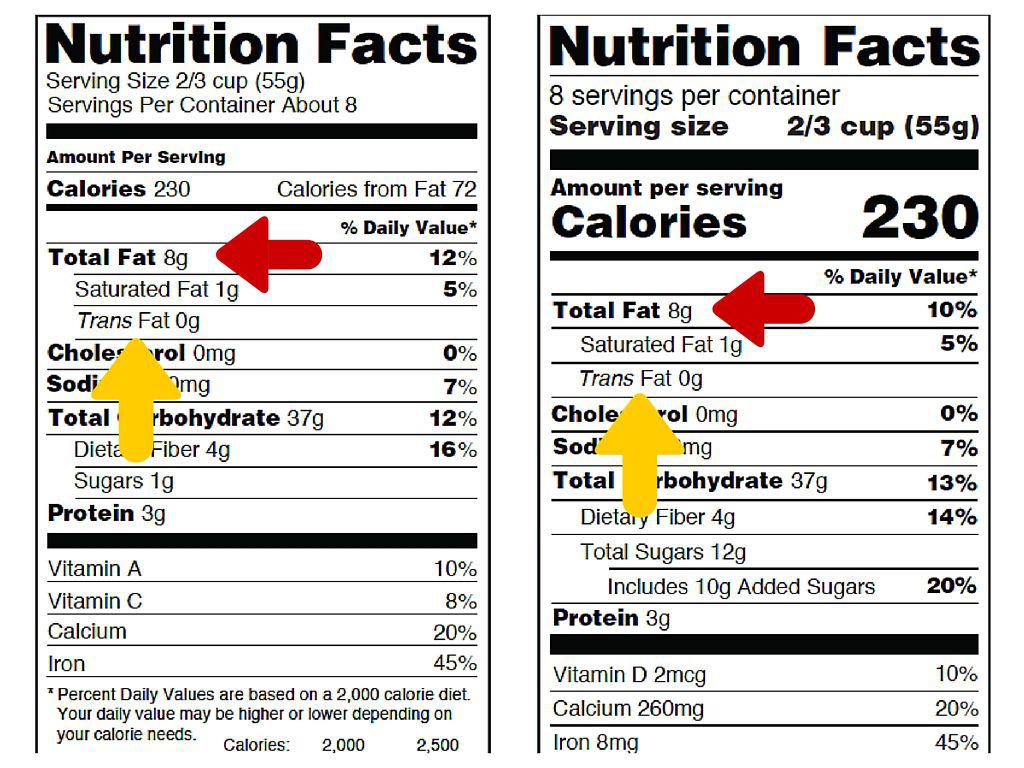
Eating healthy fats is good for your body and will help you feel satisfied throughout the day. However, fats have a higher calorie content than protein and carbohydrates, so be mindful of the amount you consume.
When reading the nutrition label, first check the total grams of fat (red arrow) in the food, then check the numbers below (yellow arrow) for more information.
.
- Saturated Fat. While there is some emerging evidence that saturated fat may not be as bad for our bodies as we once thought, most experts still recommend eating less saturated fat and more polyunsaturated or monounsaturated fats for good health. It is best to choose foods with the lowest amounts listed here.
- Trans Fats. Experts agree that trans fats are not good for your body. Try to choose foods with as little trans fat as possible.
- Cholesterol. Your doctor may have advised you to reduce your dietary cholesterol intake. If so, this number is important for you. And while it is possible to eat eggs and other sources of cholesterol in your diet, most experts still agree that monitoring your intake is important.
.Carbohydrates.
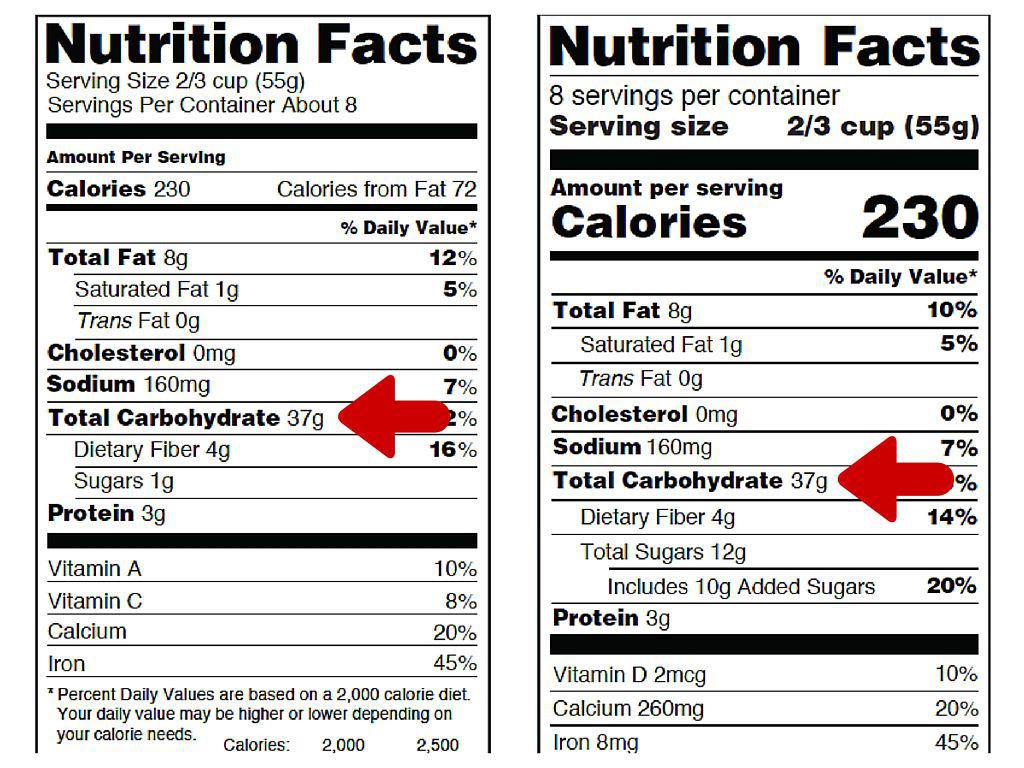
Whether you count carbohydrates or not, choosing better sources of carbohydrates is very important for good health. The "Carbohydrates" list on the Nutrition Facts label provides some information you need to make healthier decisions. Check these numbers to choose better carbohydrates for your diet.
.
- Fiber. Fiber is your friend. You will feel fuller longer if you eat more fiber-rich foods, and choosing foods with higher amounts here can help you stick to your diet more easily. Packaged foods containing grains or vegetables like spinach are often rich sources of fiber. Some foods also provide added fiber that can be beneficial for some healthy eaters.
- Sugars. It is smart to monitor your sugar intake to lose and maintain weight, as well as overall good health, so choosing foods with lower amounts here is a good idea. The new Nutrition Facts label makes it easier to choose healthier options by breaking down added sugars under the "Total Sugars" heading. Foods high in added sugars provide empty calories that can increase your daily intake and offer very little nutrition, so try to choose foods with less added sugar.
.Protein
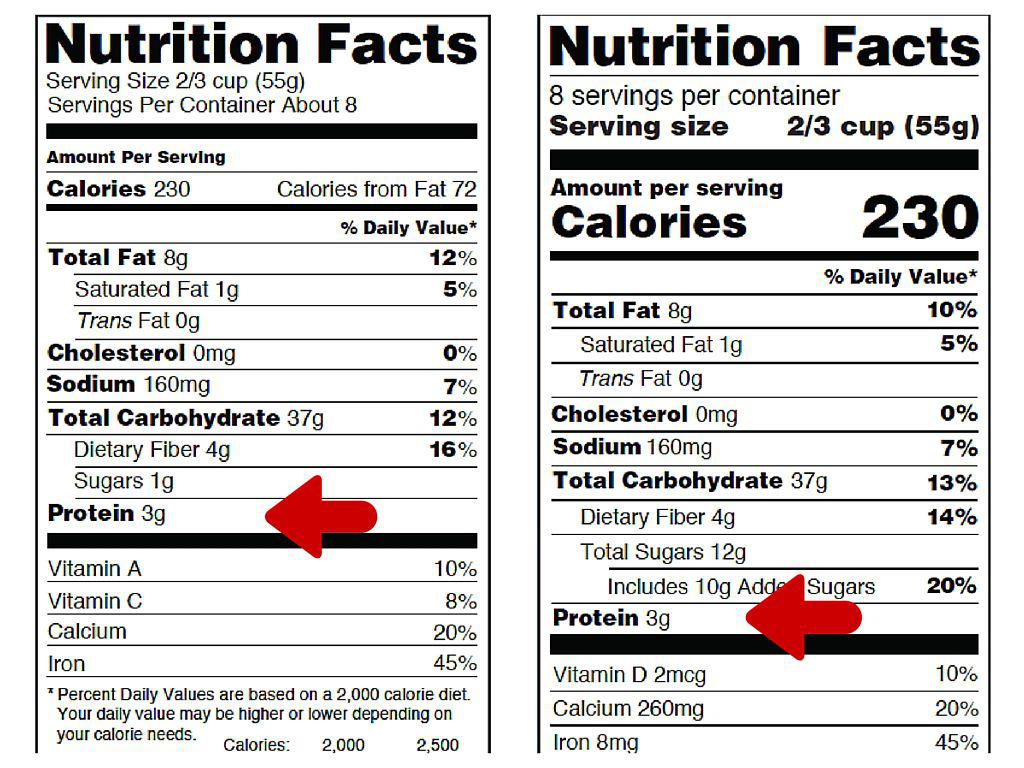
Protein is an important macronutrient for maintaining body mass. When you choose foods at the grocery store, read the Nutrition Facts label to select foods that provide protein. Lean meats and low-fat dairy products are typical examples.
But when you check the nutrition label for protein, be sure to scan the grams of fat to keep the number from being too high. Many protein-rich foods are also high in saturated fat, and some foods in the dairy and bakery sections contain unhealthy trans fats.
.Vitamins and Minerals
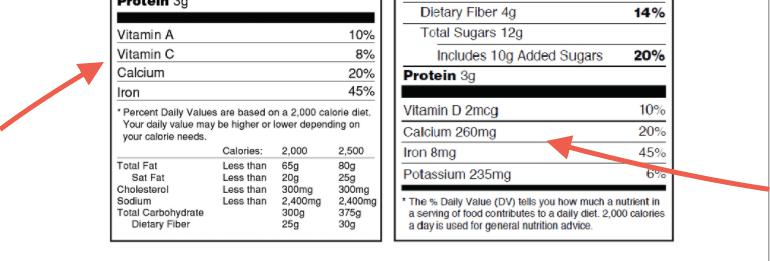
The Nutrition Facts label also highlights various vitamins and minerals present in the product.
Sodium, or salt, is a nutrient that is bolded on the label, as too much can be harmful to your health. Most experts recommend that healthy adults limit their sodium intake to less than 2,300 milligrams per day. If you have a specific health condition, such as high blood pressure or kidney disease, consult your doctor or a nutritionist to determine the right amount for you.
Other micronutrients, such as vitamin A, vitamin C, calcium, and iron, are listed below the thick black bar on the Nutrition Facts label. Choosing nutrient-rich foods will help you easily build a strong, balanced, and healthy body.
.Percent Daily Value

The column on the right side of the nutrition label has numbers displayed as a percentage. The numbers listed in "% Daily Value" tell you how much a specific nutrient contributes to your total daily diet if you consume 2,000 calories a day. If you consume more or less than 2,000 calories a day, these percentages will not be accurate for you, but they are still helpful in making healthy food choices.
Overall, the percent daily values can quickly help you assess whether a food is high or low in a specific nutrient. Generally, a percent daily value of 5 percent or less means the food is low in that nutrient, and a value of 20 percent or more means the food is high in that nutrient.
